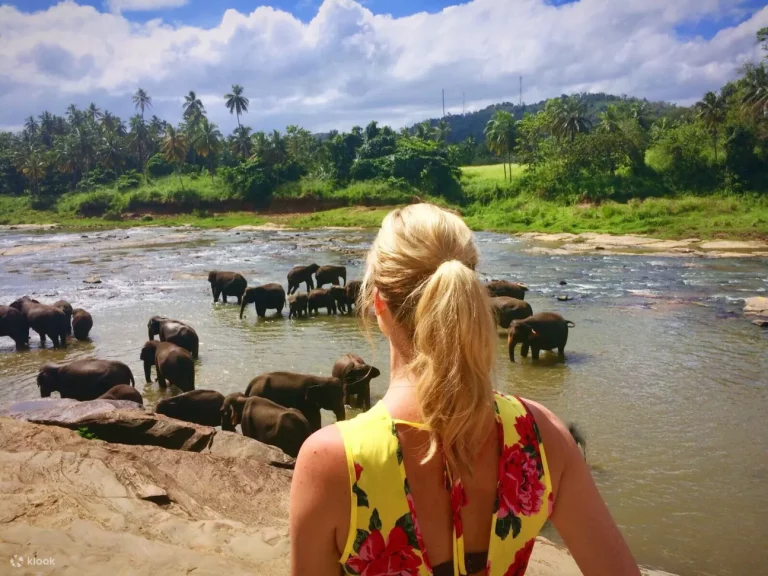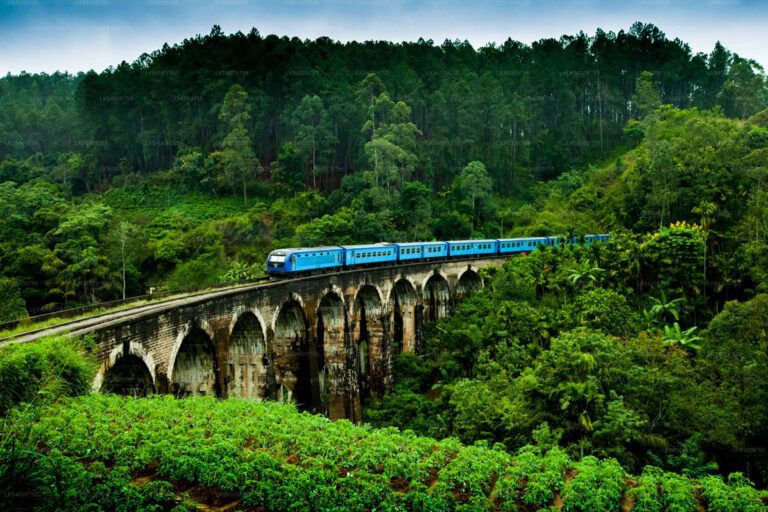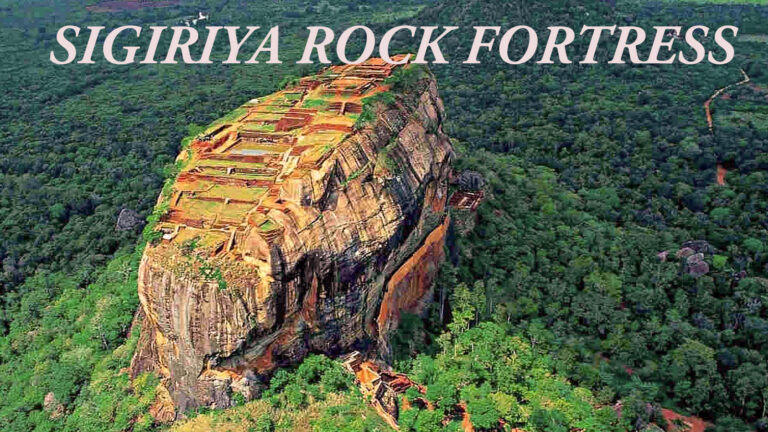The Capital City Of Northen Sri lanka – Jafna
we know jafna will be different from the rest of Sri Lanka, but we not entirely sure how. we expect it to be hot, and we expect there to be some remnants of the decades-long civil war that ravaged the city, its residents, and the north in general.
There has been precious little written about Jaffna and the north of Sri Lanka compared to the rest of the island. Until recently, this was not a stop on any western tourist’s itinerary, and unlike the well-trodden southern surfer trail, we don’t anticipate hordes of backpackers cramming into endless juice shops and souvenir stands. But what do we actually know? Next to nothing. And it’s a marvelously adventurous feeling. Most foreign visitors to the north of Sri Lanka arrive by train, now that the new railway line connects Jaffna to Colombo and the cultural triangle.
Jaffna is the capital of the North Province , and is located on the northernmost peninsula of Sri Lanka. Distance wise, it’s about 400km north of Colombo, and 315km north-west of Kandy.
Jaffna is different”, we were told, by just about every Sri Lankan we came across. “It’s so different from the south. It’s very quiet and a little bit like India”.
Lead by the predominantly Tamil population with their strong Hindu culture, Jaffna and the north is full of colourful Hindu temples, frequented by brightly sari-clad women and shirtless men praying to the gods.
The cuisine is influenced strongly by southern India, less than 100km from its coastline. Local delicacies in Jaffna include Dosas, fish curries and thali. It’s bloody delicious though, something Jaffna does have in common with the rest of Sri LankaThe common language in Jaffna is Tamil, and the distinctive curved alphabet of Sinhalese replaced with the more angular Tamil on street signs, menus and store fronts.
Despite the differences, Jaffna is a seriously raw and authentic place to visit, and we were blown away by the warmth of the locals.It might be world’s away from the south, but it’s no less worthy of your visit.
JAFFNA HISTORY | THE HISTORICAL CONTEXT
Jaffna has a complicated past, most obviously as the forefront of a decades-long bloody civil war that claimed the lives of more than 80,000 civilians. To understand Jaffna now, it’s really important to understand its historical context too.
It all started back in the 40’s, when Independence from colonial rule was obtained. At the time, a controversial law was passed by the Ceylon Parliament called the Ceylon citizenship act, which discriminated against the Indian Tamil ethnic minority. Essential, the minority Tamils were not granted citizenship to the country and over 700,000 Indian Tamils were made stateless.
There were deportations of Indian Tamils, whilst Sri Lankan Tamils were discriminated against at a cultural, religious, linguistic and economic level while the Ceylon Government actively promoted a ’Sinhala only’ mandate.
The Tamil Tigers (Liberation Tigers of Tamil Eelam) were eventually formed, fighting for a separate Hindu/Tamil state in the north and east of Sri Lanka called Tamil Eelam. In July 1983, the LTTE ambushed a Sri Lankan army patrol outside the town of Thirunelveli, killing an officer and 12 soldiers.
The Government retaliated, massacring between 400–3,000 Tamils. This is considered the beginning of the civil war, and for more than 25 long, bloody years between 1983 and 2009, Sri Lanka tore itself apart from the inside out. The majority of the battle raged in Sri Lanka’s predominantly Tamil north, and more than 80,000 (mostly civilian) lives were lost during the conflict.
In May 2009, the Sri Lankan Army declared victory and the bloody war ended.
In the aftermath, then President Mahinda Rajapaksa announced that the government is committed to a political solution and the Pro-LTTE political party Tamil National Alliance (TNA), the largest political group representing Sri Lankan Tamil community, dropped its demand for a separate state, in favour of a federal solution . While the fighting may be over and both sides live in relative peace, the pain of that time still runs deep - particularly in Jaffna, where bullet-ridden, bombed out buildings and fields full of landmines still scar the landscape
NOW IS THE TIME TO VISIT JAFFNA…
We kinda feel like now is the best time to visit Jaffna.
The war is over and investment is flooding in; there are new hotels and restaurants opening all the time, and a shiny new train is bringing visitors further north than they have ventured in decades.
Tourism provides a huge opportunity to Jaffna to start to rebuild and improve the economic prosperity in the region.Fortunately, progress is marching forward and one day this part of the country may look much like the rest of it; well-trodden tourist trails lined with backpacker hostels and smoothie shops. But for now, the north is as wild and unexplored as it gets on this tropical paradise and perfect for intrepid travellers to find off the beaten track sites and hidden treasures.
So, VISIT NOW!
Nallur Kandiswamy - Hindu temple
Absolutely stunning; that's the only way we can describe the incredible Nallur Kandiswamy, a Hindu temple dedicated to Skanda/Murugan – the god of love, war and beauty.
Just ten minutes from the centre of Jaffna town, Nallur Kandaswamy Kovil was first built as a fort in 948 when Nallur (“good city”) was an important ancient kingdom. Reconstructed twice (1450s and 1734), the towering golden-ochred temple has been calling faithful devotees to its grounds for centuries, becoming a significant landmark in Jaffna.
From the minute we entered the grounds, this temple was unlike anything we’d ever seen before. From the men prostrating while praying to gods, to women in brightly coloured saris cracking coconuts as offerings to the gods, to the sounds of chanting and incense - it’s a truly fascinating, slightly chaotic cultural experience.
Non-hindus are able to enter the temple, however do make sure you’re dressed appropriately. This means covered shoulders and legs for women, and shirts removed for men. Do not wear animal skin (e.g. leather) when entering the temple.
If you’re travelling to Jaffna during August, be sure to visit Nallur Kandiswamy temple for the Nallur festival; a colourful month-long display of the vibrant Northern culture.
Jafna Fort
Close to the coastal village of Gurunagar, Jaffna, is where you’ll find Jaffna Fort, an intriguing piece of architecture built by the Portuguese between 1618 and 1625. While under Portuguese occupation, the fort was called ‘Fortress of Our Lady of Miracles of Jafanapatão’, a name derived from the neighbouring church dedicated to Virgin Mary.
In 1658, the Dutch took hold of the fort, and the Portuguese lost their last stronghold in Sri Lanka. The Dutch went on to expand the fort, but again, the fort swapped hands in 1795, when the British invaded and drove out the Dutch. The fort remained a British garrison up until 1948.
Today, the 400-year-old fort is a visceral reminder of Sri Lanka’s colonial past, as well as a maritime heritage. The massive fort complex overlooks the Jaffna lagoon, and while much of it remains intact, a certain part of the fort had to undergo extensive restoration efforts.
The fort is known as one of the greatest Dutch forts in Asia, owing to the extensive alterations they made to the original Portuguese design, including adding defensive triangles to mirror something similar to a snowflake (which is especially visible from an aerial vantage point).
The gorgeous fort is settled within the borders of a peninsula, which is, in turn, surrounded by a moat. The fort’s walls were constructed with a combination of mortar, brick, stone and coral, and to this day, are mostly hidden underneath grassy slopes.
If you’re into history and the exciting architectural wonders it has gifted us with, a visit to Jaffna Fort would be ideal for you!
Nainathive Island
Off the coast of Jaffna lies a notable little island known as Nainatheevu, with a rich and conflicting history, and is a popular destination for both locals and tourists. Spanning just about 4km, the island was once home to the Naga people, who, according to folklore, were an ancient tribe that inhabited Sri Lanka, and are the ancestors of many modern-day Sri Lankan Tamil.
The island is known by other names in Indian literature, such as Manipallavam, and has been mentioned quite a few times. The island has also been mentioned in the Sri Lankan chronicle, the Mahavamsa, as well as by Greek cartographer Ptolemy, who called it ‘Nagadibois’.
For Buddhists, it’s considered one of the holiest religious sites in the country, with the Nagadeepa Purana Viharaya believed to be where the Lord Buddha had called upon two Naga tribe rulers who were opposing each other in order to solve their feud.
CASUARINA BEACH
Along the northern perimeter of the coastal village of Karaitivu is Casuarina Beach, arguably the most popular one in the northern peninsula. Known by many names, including Cashoorina and Casoorina, the beach derives its name from the numerous Casuarina trees that fringe its shore.
The island is also home to the Nagapooshani Amman Kovil, which is a significant Hindu temple. Having been mentioned in numerous ancient South Asian chronicles, the kovil is dedicated to the deity of power, Shakthi.
To get to the island, you would need to book a ferry, which makes stops at two other islands along the way prior to dropping you off at Nainatheevu. The island is a goldmine of folklore and religious legends, so if you’re somebody who enjoys theology and mythology rooted in history, a trip to Nainatheevu is sure to quench your thirst for knowledge!
Located about 20 km from Jaffna, Casuarina Beach is an ideal spot for a beach vacay for a number of reasons. The wide expanse it covers is picturesque, with endless gentle waves curling against the astonishingly pure white sand. The shallow waters means it’s quite safe for families to take a dip, and the trees provide ample shade if the sun gets too hot to handle.
Towards the east, you could spy the Karainagar Lighthouse, located at the very tip of the beach. The lighthouse adds to the landscape’s gorgeous view, making it look like something out of a painting.
The beach is a 45 minute drive away from Jaffna town, and can also be reached by bus. The route takes you through the village, and across the Palk Strait before you finally reach the beach. Of course, it’s quite a popular hangout spot for locals and tourists alike, so if you’d rather avoid the crowds, try and get there in the early morning, so you can fully enjoy the serene surroundings and go for a swim in its chilly morning waters. You could occasionally spot fishermen dragging out their boats, and they often let visitors join them on their fishing expeditions, so don’t be afraid to ask!
Changing rooms and food stalls could be found along the coast, so once you’re done with your swim, you can dry yourself up and settle down with some yummy Sri Lankan and South Indian snacks!
Charty Beach
About 15km away from the city of Jaffna is the white sandy beach known as ‘Charty Beach’, a beautiful little spot far from noise and crowds commonly found at the more popular beaches of Sri Lanka. Due to the Civil War, the beach had remained vastly untouched until after it ended. Today, you can find many resorts a short distance away from it, making it a great beach vacation area.
Palm and coconut trees line the shore like markers of a tropical paradise, and the almost always sunny weather at this beach ensures you can get that without a worry!
Little huts also dot the beach, so if you need to get away from the sun and rest in the shade, you could always hop into one.Vendors have set up shop away from the shore, selling numerous local delicacies, so don’t hesitate to drop by a stall and try some exquisite Sri Lankan street food! If you’re eager to take a dip, feel free to dive right in! Charty Beach has plenty of changing rooms, so getting drenched is no problem at all.
The picturesque beach combines sapphire blue waters with stunning white sand to paint an exotic view that is certain to heal your soul and please your eyes. Charty Beach has all the amenities minus the large crowds, so it’s ideal for those who would like to take a break from the crowds and just chill with the waves.







